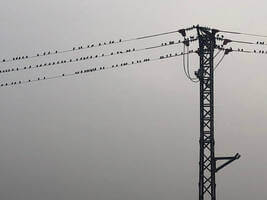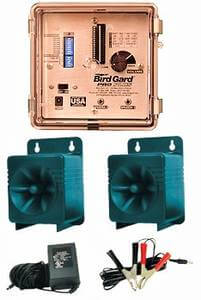Bird Gard bird repellers are used by electric distribution companies to improve the quality of power supply and minimize power outages caused by the perching of large flocks of starlings on electrical lines.
Disruptions in Power Supply Due to the Perching of Thousands of Starlings on Power Lines
Electric distribution companies, as part of their network monitoring protocols, can detect micro power outages occurring at specific points in their network. These outages are so brief, lasting only a few seconds, that they are barely noticeable to individual users. However, they do affect large industries and in some cases, can even halt machinery and production in those industries.
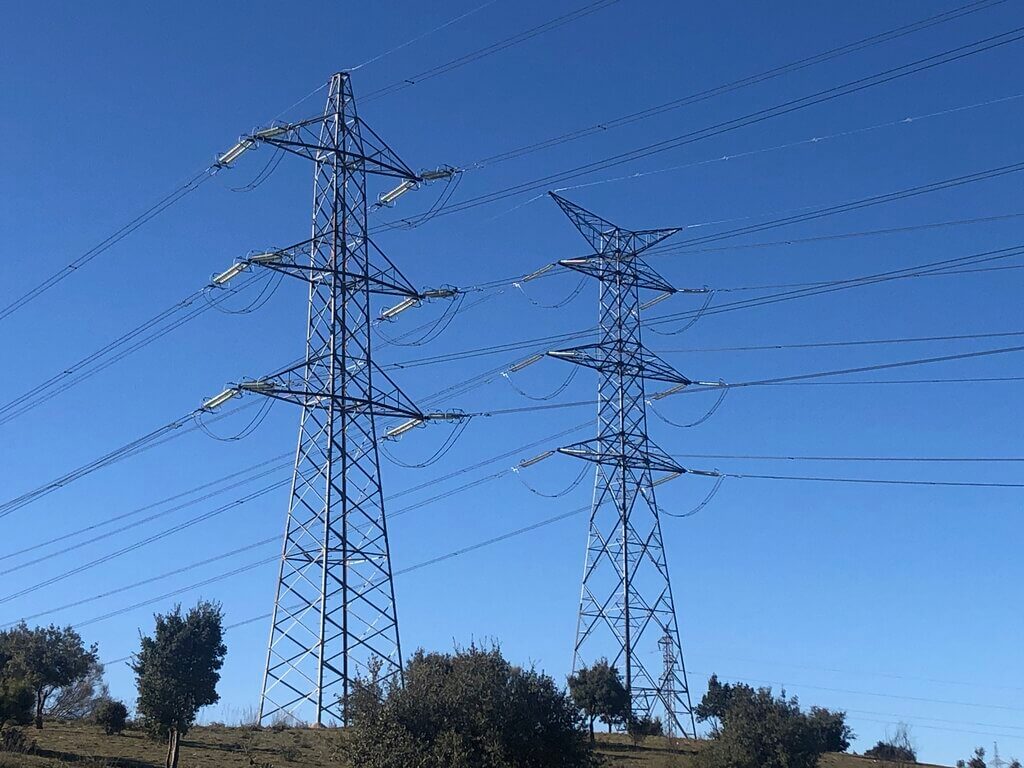
The first step in identifying the cause of micro power outages is to analyze the distribution networks to identify faulty lines, cable protection issues, and so on. However, the source of the problem is not always found there. Sometimes, upon further investigation, it is observed that these small power supply disruptions occur up to 5 or 6 times a day, mainly at dusk.
When field engineers visit the areas where micro power outages occur, they sometimes observe that the issues are not physical faults in the distribution networks, but rather flocks of birds that are causing the power outages. It is not uncommon for huge flocks of thousands of starlings to use certain electrical towers as perching spots during dusk in certain areas and seasons. As they all take flight together, the flock causes the cable they are perched on to suddenly drop and then rise higher than its usual position. This creates a whiplash effect, resulting in a collision with the upper cable. The collision of the cables causes a brief short circuit and subsequent power supply failures.
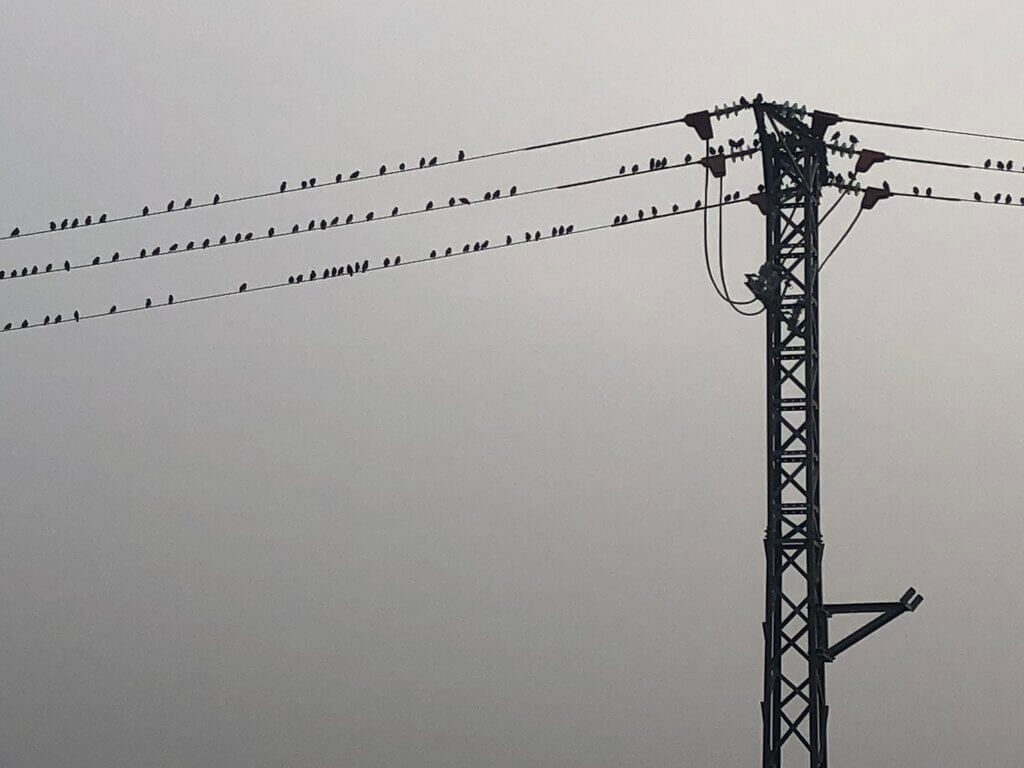
A starling is a small bird, weighing only between 50 and 100 grams. However, starlings gather in flocks of a large number of individuals. A flock of starlings can consist of anywhere between 10,000 and 75,000 individuals. The accumulated weight of such a large number of birds on the power lines, coupled with the synchronized movement of the starlings, causes the whiplash effect and the subsequent power outages.
Why do starlings fly in flocks?
The flocks of starlings move as a cohesive unit, contracting and expanding, rising and descending, and changing direction while maintaining a compact shape. In a flock of starlings, there is no single leader that all the birds follow. Each starling moves based on the movements of its nearest neighbors.
Similar to other species, such as fish, it seems that starlings gather in flocks to protect themselves from predators and exchange information about better feeding and resting areas.
Starlings gather on power lines at dusk, as they are about to enter their roosting place, typically a wooded area.
Energy Companies Take Measures to Ensure Power Supply Quality Amidst Starling Flocks
As part of their operational protocols, electric companies implement various measures to minimize power supply disruptions caused by starling flocks perching on their power lines. These actions primarily fall into two categories:
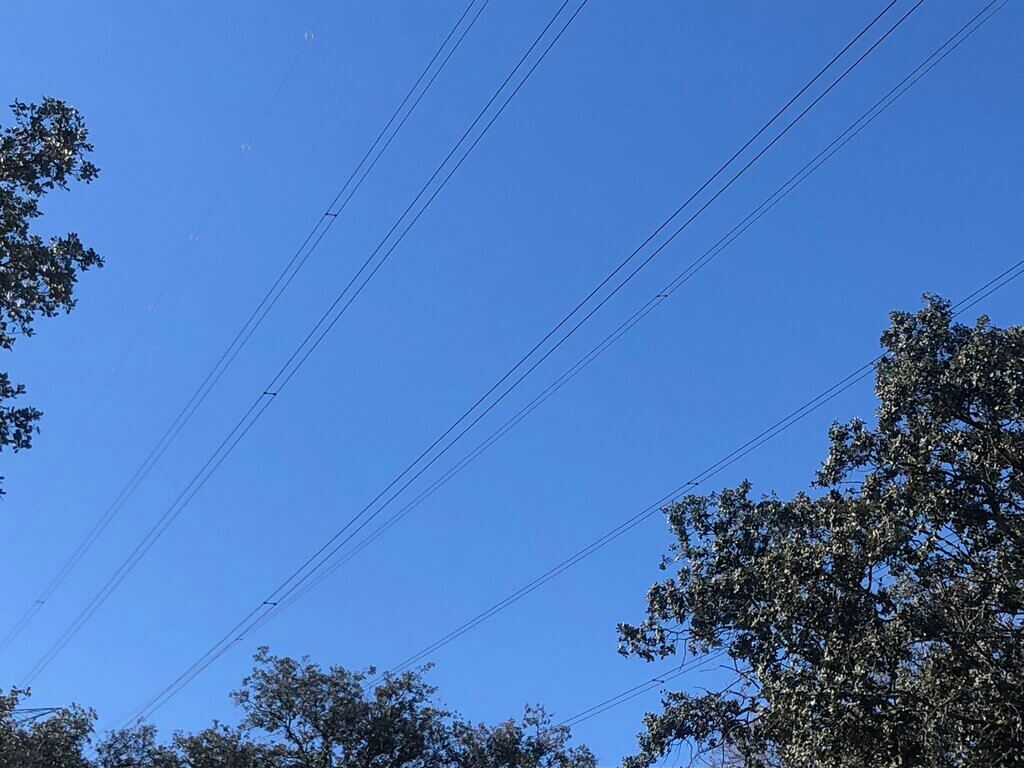
- Adapting towers to prevent collision between power lines, even when birds perch on them. In this regard, two main methods are used to adapt the towers:
- Increasing the tension of the power lines to create distance and minimize the risk of collision when birds take flight
- Installing physical barriers (such as rods) to maintain separation between the power lines and prevent the whiplash effect
- In cases where the above measures are not technically feasible, electric supply companies may resort to sonic bird repellers to deter starling flocks from perching on the power lines
Iberdrola Reference: Installation of Sonic Bird Gard Bird Repellers on Medium Voltage Towers
Iberdrola uses two bioacustic Bird Gard bird repellers on medium voltage towers in the region of Alicante (Spain). These towers have been identified as critical points because birds frequently perch on them, causing power outages.
Iberdrola has selected the Bird Gard Pro Plus #61 bird repeller model. These devices are specifically designed to deter flocks of starlings. The equipment consists of a central unit and two external speakers.
The Bird Gard Pro Plus starling repeller is positioned at the top of each medium voltage tower, with each speaker facing opposite sides of the power lines. Each speaker provides coverage against starlings perching on the power lines for approximately 100 linear meters. In other words, a single unit protects a total of 200 linear meters of overhead power lines, preventing starlings from perching in that area.
The central unit of the Bird Gard starling repeller is powered by a standard 12V battery. The battery is kept charged by a 25-watt solar panel, specifically designed for BirdGard bird repellers.
Since the problem of birds perching on power lines is limited to dusk, when starlings gather on the power lines before going to their roosting place, a timer is used to supply power to the equipment during specific time slots. It is only during those time slots that the starling repeller is operational. During those moments, the bird repeller emits distress calls of the starlings themselves, along with predator sounds such as hawks, sparrowhawks, etc. When the starlings hear these sounds, they understand that they should leave the area and find a better place to settle.
How have the results been with Bird Gard Starling Repellers in preventing bird flocks on power lines?
The objective of installing the Bird Gard starling repellers was to minimize the number of incidents with bird flocks on the network structures and improve power supply quality, all in a bird-friendly manner.
“The results have been very good.”
states Ignacio García – Responsible UTD Alicante at Iberdrola, Spain
In this video, you can see the positive results of the Bird Gard Pro Plus starling repeller when tested before its installation on the medium voltage tower.
During dusk, when the bird repellers are operational, starling flocks avoid perching on the towers protected by the bioacustic repellers and relocate to other areas where they do not cause power supply issues.
Thanks to this investment and the implementation of other tower adaptation measures, the incidents of power supply disruptions caused by birds perching on power lines in the Alicante region of Spain have been significantly reduced, improving the supply quality.
Starling Repellers – Other References
The following articles are references from BirdGard Iberia customers who use Bird Gard bird repellers to deter flocks of starlings:
- The article “The Government of La Rioja Acquires BirdGard Sonic Bird Repellers for Bird Control” explains the reference of the Government of La Rioja using BirdGard Sonic Repellers with Chip #61.
- Dr. Martínez, Director of the Viticulture Group at CSIC (Spanish National Research Council), shares her experience with different methods to deter birds from vineyards.
- José Luis López Budia, a farmer in Cifuentes, explains how he has managed to protect his almond trees from woodpecker attacks and his cherry trees from thrush flocks.
- Experience of one of BirdGard Iberia’s customers with the Bird Gard Pro acoustic repeller, to get rid of starlings at their tourist complex in Mahón.
- Check out other Customer References from BirdGard Iberia.
If you have any questions about which type of birds are attacking your crops, we recommend reading the article “Differences Between Starlings, and Blackbirds“.
